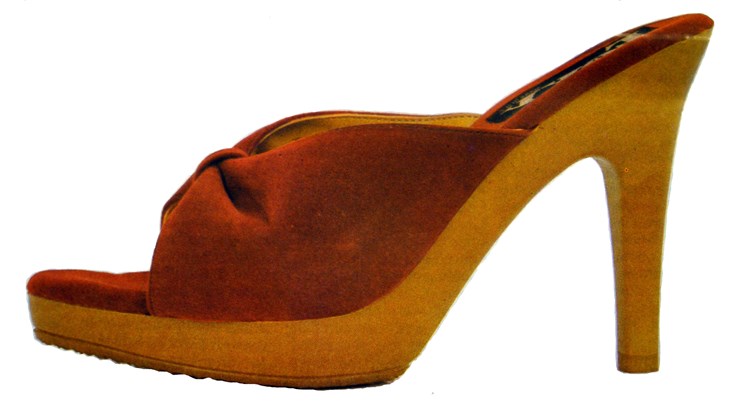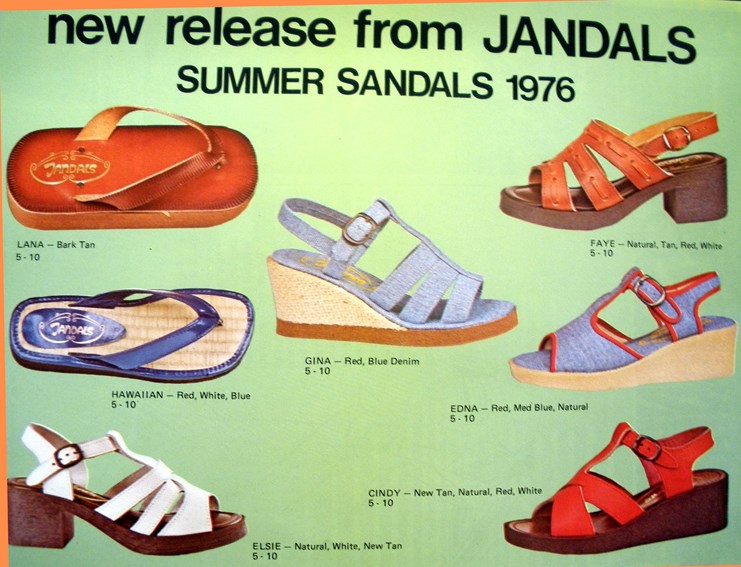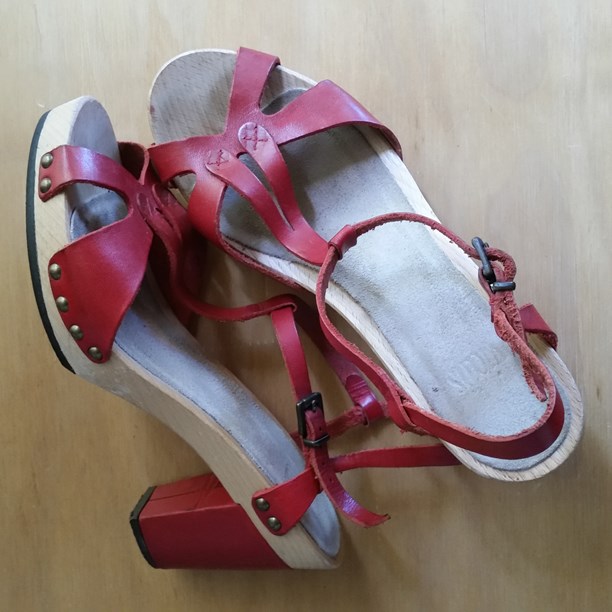Stories
Sole Mates
1970s

Platform soles, high wedges and chunky heels defined the footwear of the 1970s. Solidly constructed and often disproportionately heavy, it was worn with everything from pantsuits, jumpsuits and flared jeans to midis, maxis, hot pants and caftans.
Platforms were a boon for wearers of flares as they kept the cuffs from dragging on the ground. In a winter issue, Eve magazine suggested wearing platforms in coloured suede with maxi dresses in paisley Viyella.
The mood continued into summer, with New Zealand footwear manufacturers producing ranges of sandals, espadrilles and slides with elevated soles. More-you-than-shoe, the high heeled, toe-peeper slide was undoubtedly the sexiest. Described as 'the hottest thing you’ll handle this summer', a red suede slide, with the style name Foxy, appeared in Apparel magazine in 1979. A similar design to one worn by Olivia Newton-John with skin-tight black pants in the 1978 movie Grease, it had an all-in-one moulded synthetic platform sole and heel, identified as a 'polybottom'.

Red suede Foxy slide by Peace Footwear, 1979.
Soles and heels were also formed from wood and cork, a throwback to the wedge heels of the 1940s. While the former had the inflexibility of a wooden clog, the latter provided a lighter, more comfortable option. Wedge heels wrapped in rope or other natural fibres emulated the Spanish espadrille, traditionally flat-soled until Yves Saint Laurent introduced a wedge version in 1970.

Jandals advertisement, 1976.
Doris de Pont remembers buying wooden platform soles from the Andrea Biani factory shop in New Lynn, Auckland in 1973 and making her own platforms, using strips of leather and fixing them with upholstery pins. She also made them for friends and family. A few years ago, when the trend for wooden platforms briefly resurfaced, she bought a pair for nostalgia reasons. "I had forgotten how awkward, hard and noisy they were to walk in," she says. "They now languish in the back of the wardrobe."

These leather and wood platforms purchased by Doris de Pont at a later date are similar to those she wore in the 1970s.
As well as leather and suede, cloth was used for sandal uppers, canvas, broderie anglaise and denim being particular favourites. Denim sandals with rope platforms were also designed for children. They were sometimes adorned with flowers or other decorative motifs.

Blue denim rope-soled sandals, Auckland 1977.
In his book Shoes: Fashion and Fantasy (1989), the noted fashion historian and author Colin McDowell expressed his dislike of platform soles, describing them as "fashion gone wrong". The thousands of style-conscious women devoted to clomper-stompers, as they were affectionately known, throughout the 1970s, would not have shared his opinion.
Text by Cecilie Geary. Banner image courtesy of Te Papa (PC004320). Woman's shoes, 1950-1970, maker unknown. Acquisition history unknown. CC BY-NC-ND 4.0.
Published January 2020.